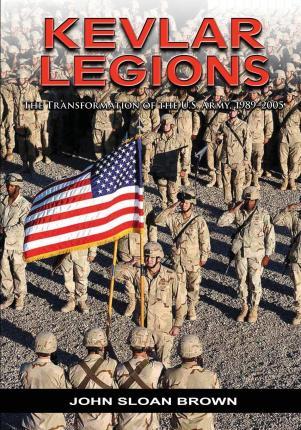Kevlar Legions: The Transformation of the U.S. Army, 1989-2005

Kevlar Legions: The Transformation of the U.S. Army, 1989-2005
The U.S. Army is such a vast institution that change appears to occur slowly, if at all. Yet when looking back only a few decades, an intelligent observer can only marvel at how much the Army has changed, indeed transformed, in the period since the end of the Cold War. This reconfiguration has been due less to any posited "Revolution in Military Affairs" than to the careful and methodical investment of Army leadership in thoughtful doctrinal refinement, innovative experiments, and the intelligent adoption of specific technologies. Evolution is harder to see and track than revolution, but the result of those decades of thoughtful and gradual change is that the U.S. Army-flexible, adaptable, and deadly-stands as the most capable ground force in the world today. "Kevlar Legions: The Transformation of the U.S. Army, 1989-2005," argues that from 1989 through 2005 the United States Army attempted, and largely achieved, a centrally directed and institutionally driven transformation relevant to ground warfare that exploited Information Age technology, adapted to post-Cold War strategic circumstances, and integrated into parallel Department of Defense efforts. The process not only modernized equipment, it also substantially altered doctrine, organization, training, administrative and logistical practices, and the service culture. The resultant digitized expeditionary Army was as different from the late Cold War Army as the late Cold War Army was from that of the early Cold War or from the mobilization-based Armies of World Wars I and II. "Kevlar Legions" further contends that the digitized expeditionary Army has withstood the test of combat, performing superbly with respect to deployment and high-end conventional combat and capably with respect to low-intensity conflict.
PRP: 173.52 Lei
Acesta este Prețul Recomandat de Producător. Prețul de vânzare al produsului este afișat mai jos.
156.17Lei
156.17Lei
173.52 LeiLivrare in 2-4 saptamani
Descrierea produsului
The U.S. Army is such a vast institution that change appears to occur slowly, if at all. Yet when looking back only a few decades, an intelligent observer can only marvel at how much the Army has changed, indeed transformed, in the period since the end of the Cold War. This reconfiguration has been due less to any posited "Revolution in Military Affairs" than to the careful and methodical investment of Army leadership in thoughtful doctrinal refinement, innovative experiments, and the intelligent adoption of specific technologies. Evolution is harder to see and track than revolution, but the result of those decades of thoughtful and gradual change is that the U.S. Army-flexible, adaptable, and deadly-stands as the most capable ground force in the world today. "Kevlar Legions: The Transformation of the U.S. Army, 1989-2005," argues that from 1989 through 2005 the United States Army attempted, and largely achieved, a centrally directed and institutionally driven transformation relevant to ground warfare that exploited Information Age technology, adapted to post-Cold War strategic circumstances, and integrated into parallel Department of Defense efforts. The process not only modernized equipment, it also substantially altered doctrine, organization, training, administrative and logistical practices, and the service culture. The resultant digitized expeditionary Army was as different from the late Cold War Army as the late Cold War Army was from that of the early Cold War or from the mobilization-based Armies of World Wars I and II. "Kevlar Legions" further contends that the digitized expeditionary Army has withstood the test of combat, performing superbly with respect to deployment and high-end conventional combat and capably with respect to low-intensity conflict.
Detaliile produsului










